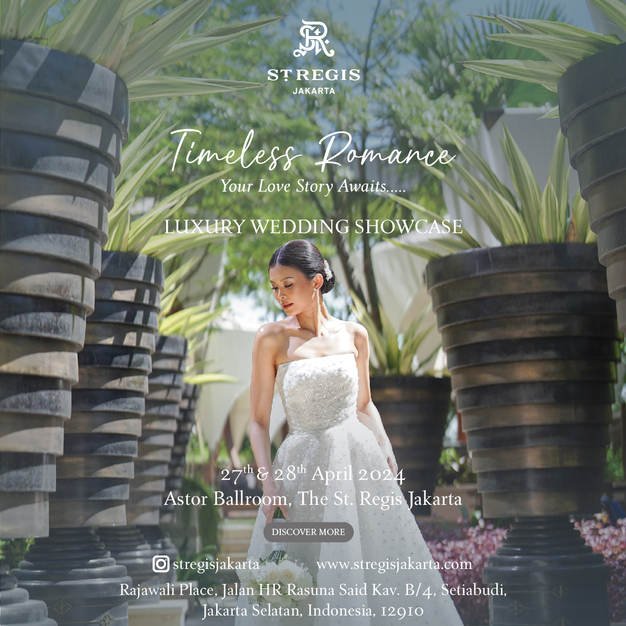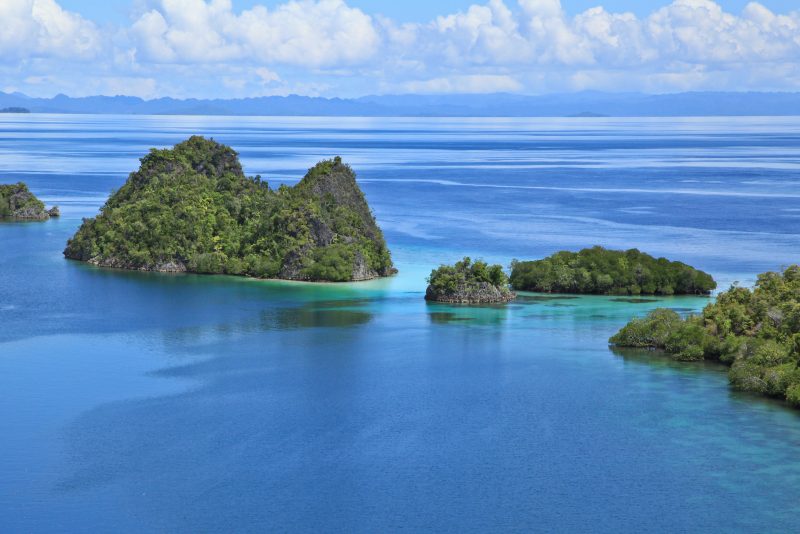Expensive dive resorts and ecotourism seem to be the first things that come to most people’s minds at the mention of Raja Ampat. My recent visit confirmed the rumours I’ve heard of the archipelago’s incomparable beauty and biodiversity. Nevertheless, something else brought me here: a desire to get to know the people who call it home, and their take on the rise of conservation and ecotourism endeavours claiming to save their homeland.
My first sights of Raja Ampat were those cruising along the Sagewin Strait – a migratory path for cetaceans such as dolphins and pilot whales. Two of the main islands of the ‘Four Kings’, Batanta to my right and Salawati to my left, flaunt their heavily forested hills. Despite being merely five kilometres apart, Batanta and Salawati are known for very different birds and dive sites.
After a three-hour ride from Sorong, our speedboat parked in Deer, a lush coastal village surrounded by calming turquoise waters in Kofiau Island. A sign reads Lokasi Sasi, meaning that it is a customary conservation spot where the indigenous community sets a taboo on catching fish, sea cucumbers, prawns and shellfish, seasonally lifting the taboo for harvest.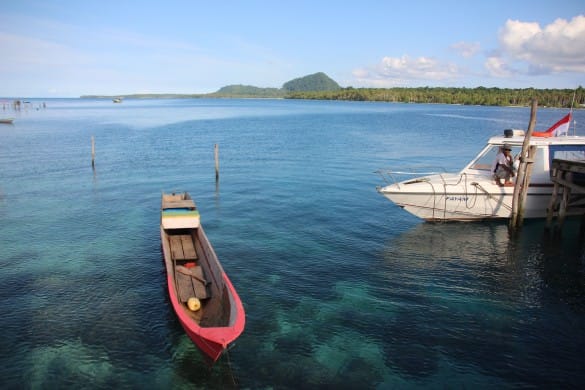
In Deer I stayed with The Nature Conservancy (TNC), which has been working together with the indigenous peoples of Kofiau and Misool to exercise participative conservation based on the principles of indigenous knowledge. We visited local elder Costan Mambrasar to hear about the local perspective of conservation.
Costan’s ancestors, originally from Biak, paddled to Kofiau in canoes by way of the Bird’s Head and Waigeo over several generations. Though the inhabitants of Kofiau self-identify as Papuans, their history and culture bear strong Moluccan influences, reflected in their traditional dress, wedding customs, and accounts of war and trade with kingdoms of the Spice Islands.
Memories of Costan’s childhood showed that while some things were abundant, others were obtained only with hard work. “We’ve always eaten sago and root crops, but sago trees aren’t native here. We’ve had to paddle as far as Misool and Salawati – a week’s journey – to collect them. It was only in the mid-20th century that the Dutch initiated sago plantations in Tolobi and Deer,” he recalled.
“We didn’t have to go very far for fish though. We lived in floating homes and fished through a hole in the floor using lines made from bark. When someone became ill or gave birth, we’d collect bark from trees in the forest and make our own medicine.”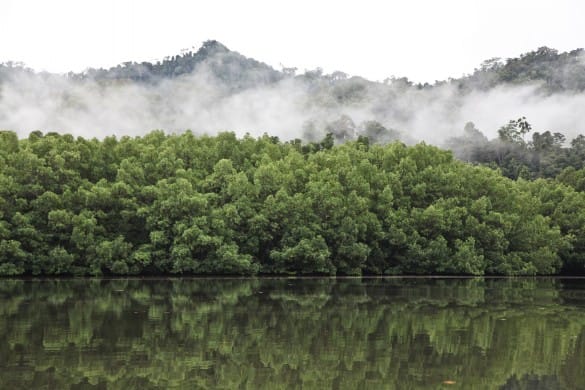
According to Costan, sasi is not a local tradition but rather a Maluku custom introduced in the 21st century for conservation interests. The indigenous people of Raja Ampat recognize clan-based rights to land and natural resources – with these rights come responsibilities to take care of the environment.
“There used to be no such thing as marine pollution or destruction. Those started when Papua was ‘returned to Ibu Pertiwi’,” said Costan, referring euphemistically to the Indonesian annexation in 1963.
Under the Dutch New Guinea administration, Dutch navy patrol made it impossible for Indonesian fishermen to penetrate Raja Ampat. Fishermen from Sulawesi have since freely fished in Papuan waters using bombs and potassium, causing grave damage to Raja Ampat’s delicate marine ecosystems. On land, concessions were also given to logging companies.
Costan appreciates the presence of organizations such as TNC that calls attention to endangered species and destructive fishing practices. “Thanks to TNC’s work, people in a number of villages in Kofiau have given up bombing and potassium,” he said. “Even when most of the damage is done by people who are not originally from Raja Ampat, environmental campaigns empower us to be at the forefront of protecting our own homeland. This includes saying no to businesses that have exploitative interests in Raja Ampat.”
From Kofiau, I moved on to Waisai, the Raja Ampat capital in Waigeo. A stopover in Mansuar allowed me to snorkel the jetty in Swandarek, which was bursting with colourful schools of fish and coral, livelier than ones I’ve seen in Ratatotok, the Togians, or Selayar-Takabonerate. “Kawasan Konservasi Laut Daerah (KKLD) marine conservation zoning has allowed such life to thrive in these waters,” said an accompanying TNC staff.
In Waisai I met Udin, an indigenous leader from the Mayalibit Bay area in Waigeo. Despite his profession as a forest ranger, Udin has seen less amiable relationships with conservation since the introduction of the government-backed KKLD. In contrast to the seasonal sasi, KKLD spells a permanent ban from harvesting resources. “A ban means that people lose access to their livelihoods. That’s why before declaring conservation areas people need to be properly informed how this empowers them to gain a better livelihood.”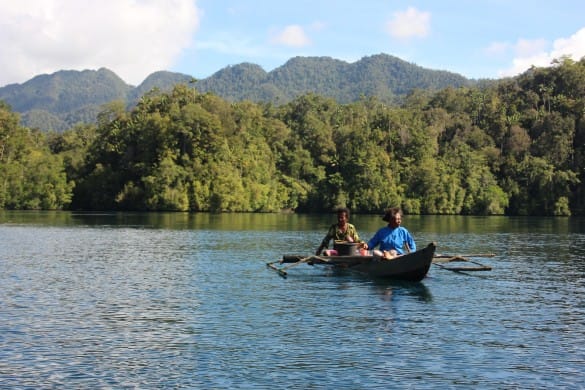
On my visit to the Bay, Udin’s family invited me on a fishing trip. I assumed that in this secluded location away from bombers, trawlers and pollution, fish would be plentiful. My conscience agonized when our catch size averaged less than 12 centimetres for species that should be able to grow much bigger. But after spending the whole morning on the boat, I realized that lunch was going to be either those or nothing.
A big push that urges conservation in Raja Ampat is of course tourism. In a conversation with Udin’s aunt Musfidah, a respected community elder, I learned that the community has nothing against conservation or tourism.
Rather, people are upset when investors claim land and water for business activities without prior informed consent, or when conservationists challenge the community’s sense of guardianship of their ancestors’ homelands – especially at the expense of indigenous livelihoods.
“I don’t think it is too much to ask businesses and organizations to recognize indigenous communities as the rightful inhabitants of the land, and to invite them for participative collaborations subject to the approval of customary protocols. But what often happens is that outsiders come and stay, do their business, while indigenous landowners just sit back and watch the outsiders enjoy the fruits of labour they never were invited to be part of,” said Musfidah.
She added that the regency government also charges fees for tourists that come to Raja Ampat, supposedly for conservation purposes, but these funds rarely make it to the communities that need it the most. Instead, the government tourism office tends to treat locals like poor people, using the funds to distribute mung beans for children, raskin (subsidized rice rations for the poor) for families, and wheelie bins for beach clean-ups. “We don’t need to beg for these things, we have our own,” she said.
Elsewhere, NGOs such as TNC rely on corporate sponsorship to run their programmes, which in some cases do a better job at building personal relationships with community members, identifying their needs, and designing campaigns that transform behaviours. However, even the most independent of NGOs work within time-bound projects, limited geographical scopes, and flawed government policy frames.
Musfidah said that transfer of knowledge and technology are crucial for empowering the indigenous people of Raja Ampat to stay on top of socioeconomic developments and environmental conservation interests. These, she adds, should be on top of business and conservation agendas in Raja Ampat.


